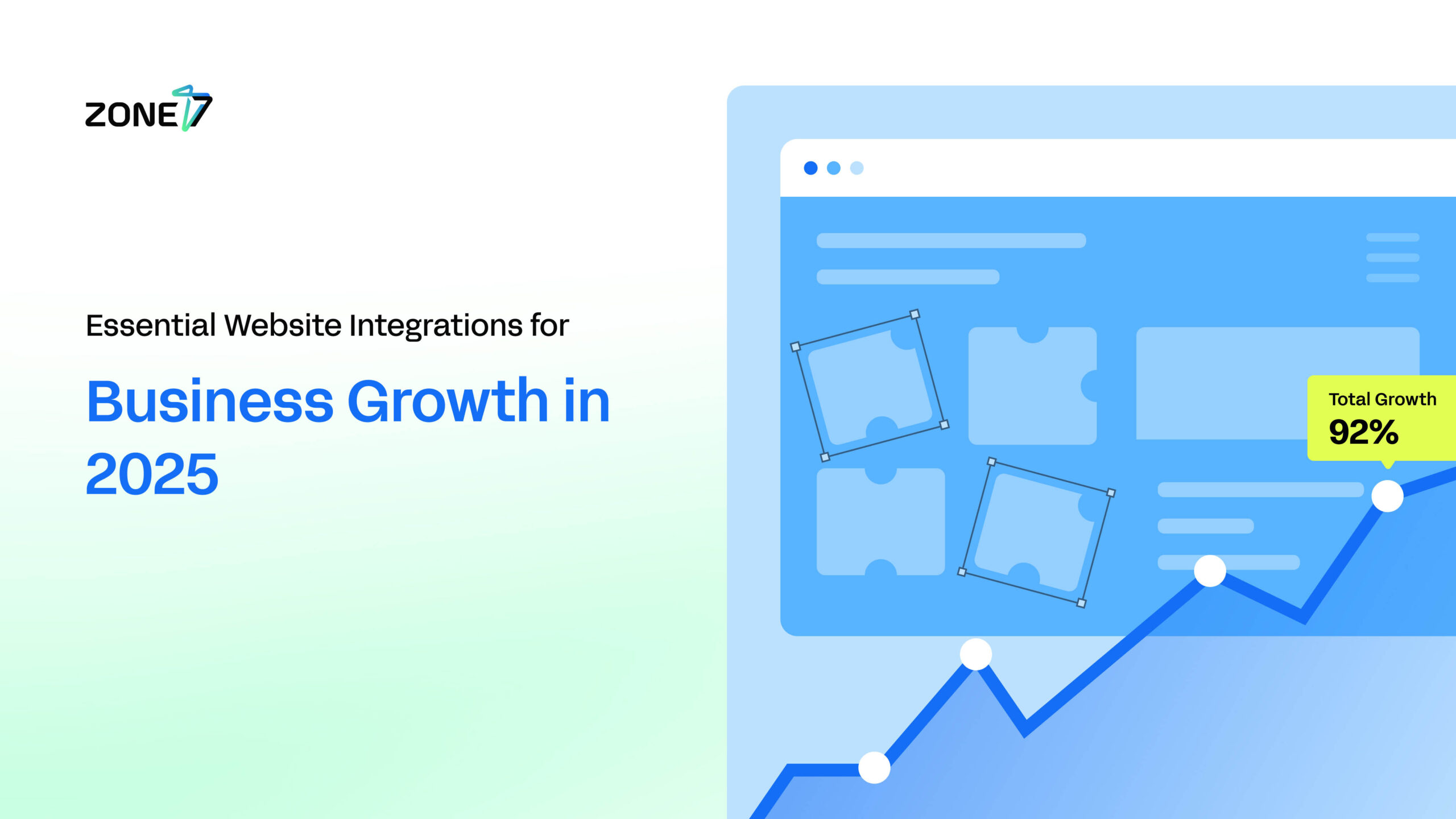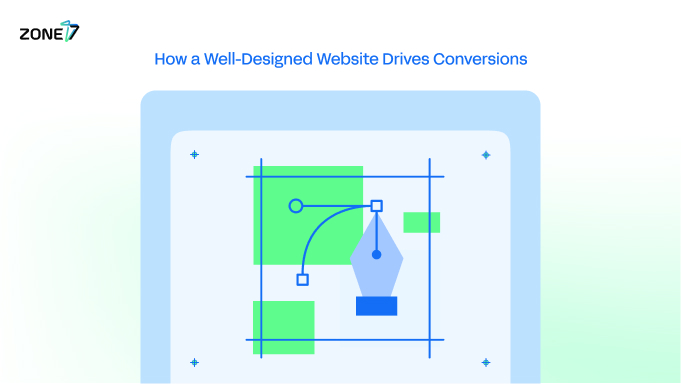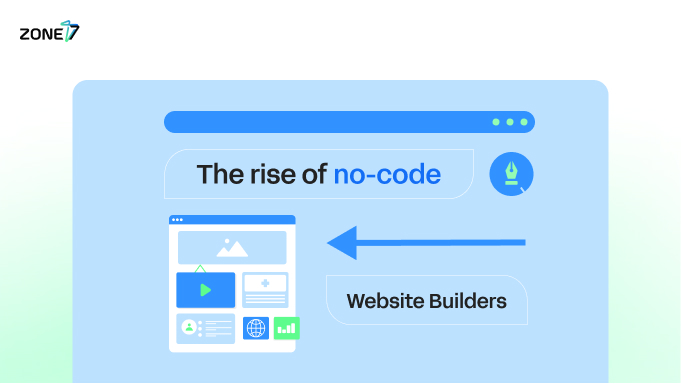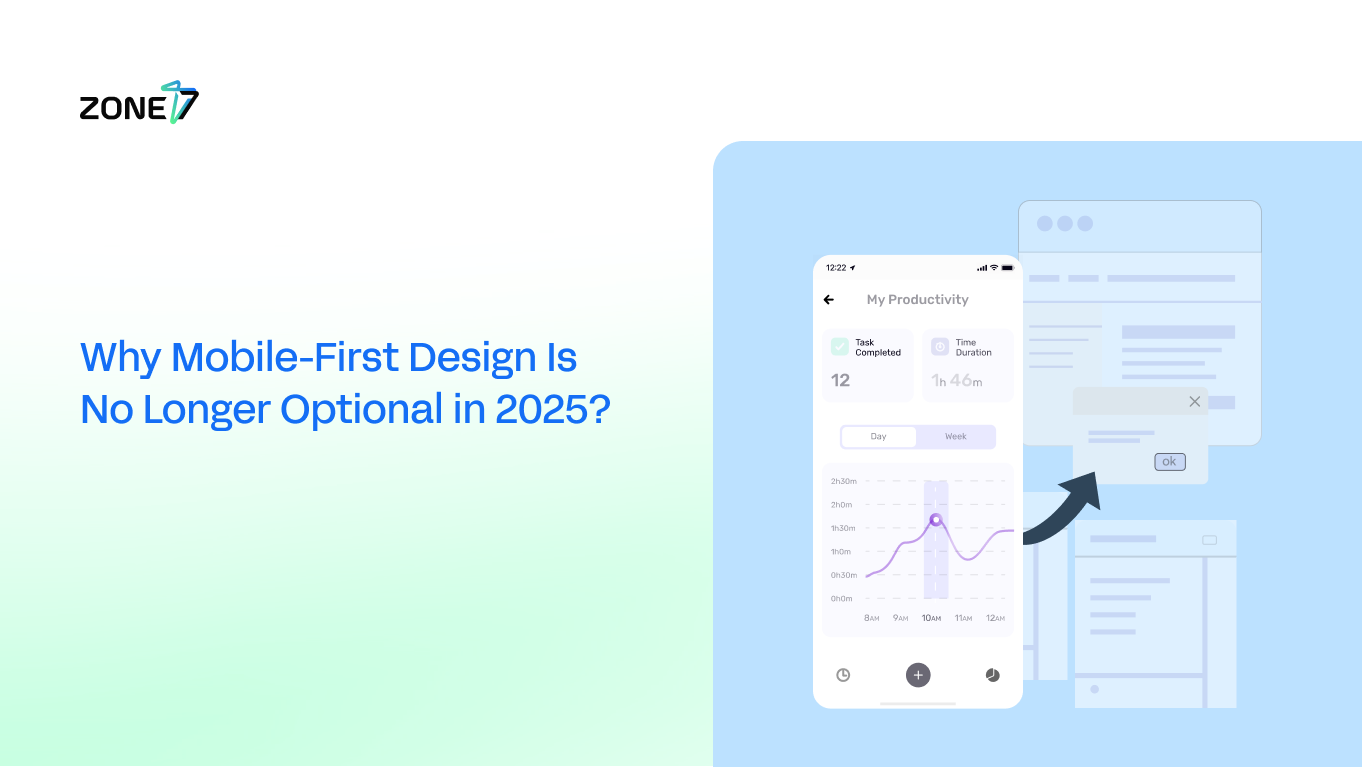In today’s digital landscape, a static website is no longer enough; businesses need a more interconnected digital hub to thrive. Website integrations are now fundamental to any digital strategy, enabling automation, centralized data, customer experiences, and efficient scaling.
Industry leaders like John Chambers and Jeff Bezos emphasize that digital transformation is a continuous journey, requiring perpetual adaptability. This means investing in flexible integration architectures and committing to ongoing monitoring and optimization.
As Eric Pearson notes, “it’s no longer the big beating the small, but the fast beating the slow,” highlighting how integration provides a decisive competitive edge.
This blog examines the advantages of website integrations, explores nine critical types, and outlines best practices for successful implementation for businesses to transform their online presence.
The Foundational Pillars: Essential Website Integrations for Business Growth
Integrations that transform website’s online operations, creating an interconnected and intelligent ecosystem.

Automating Operations
Integrations eliminate manual data entry and repetitive recurring tasks, saving time and reducing errors.
This work process automation workflows across CRM, ERP, and accounting platforms, freeing staff for strategic activities and improving customer satisfaction through automation like order processing, customer journey wizards, etc.
Unifying Data
Integration dismantles data, creating a single source of actionable information. Centralized data provides real-time insights for informed decision-making across marketing, sales, and operations, enhancing analytical capabilities.
Customer Experience & Engagement
Integrations create a frictionless customer journey with personalization and immediate responses. This satisfaction, fosters loyalty, and boosts conversion rates through consistent information.
Scalability & Future-Proofing Operations
A well-designed integration architecture allows businesses to expand and adapt without costly overhauls. Cloud-based solutions and flexible APIs support increased data volumes and new features, enabling growth without overwhelming IT resources.
The true power of system integration lies in its upgradability with demand. While individual integrations offer distinct advantages, their interconnectedness creates a powerful multiplier for business value.
For example, customer data from a CRM system, when combined with insights from website analytics, can inform highly personalized marketing automation campaigns.

Essential Website Integrations & Their Core Benefits
| Integration Type | Primary Function | Key Benefits |
| CRM | Centralizes customer data, automates sales tracking. | Eliminates manual processes, enhances customer experience, supports scalability. |
| Website Analytics | Tracks user behavior, traffic, and performance. | Enables data-driven decisions, optimization data for UX and SEO, aligns cross-team efforts. |
| Payment Gateways | Securely processes online transactions. | Increases conversion rates, builds customer trust, supports global reach, ensures reliability. |
| Marketing Automation | Nurtures leads, manages campaigns, retains customers. | Automates lead nurturing, improves lead quality, customer lifetime value, measures campaign performance. |
| Live Chat & Support | Provides real-time customer communication. | Increases customer satisfaction, boosts engagement, improves productivity. |
| Email Marketing Platforms | Builds subscriber lists, sends targeted campaigns. | Direct communication channels, personalizes content, supports re-engagement & retention, offers measurable performance. |
| Accounting Software | Automates financial data entry and reporting. | Reduces errors, centralizes financial data, cuts costs, improves financial visibility & security. |
| Booking & Scheduling Systems | Manages appointments and reservations. | Increases customer convenience, reduces no-shows, streamlines operations, optimizes staff time. |
| Social Media Integration | Amplifies brand reach and engagement. | Enhances brand presence, ensures consistent messaging, provides user insights, leverages social proof. |
| Security Integrations | Protects digital assets and ensures compliance. | Strengthens security posture, streamlines management, improves cost efficiency, increases agility & scalability. |
Essential Integrations Every Business Website Needs (Deep Dive)

1. CRM Integration: The Heart of Customer Relationships
Customer Relationship Management (CRM) integration centralizes customer data and streamlines interactions. CMR’s syncs customer information across systems (e.g., e-commerce, ERPs) for a single source, and automates processes from lead capture to order management, and improves collaboration by providing consistent data to all teams.
The notable CRM examples are: Zoho, Hubspot, Amazon CRM, Microsoft Dynamics, ActiveCampaign, Zendesk, etc.
2. Website Analytics: Understanding User Behavior & Performance

Website analytics is crucial for understanding user behavior and optimizing online presence. Analytics tools provide comprehensive traffic, user engagement, conversion monitoring, and technical performance monitoring (e.g., page load time, mobile responsiveness).
To provide a clearer understanding of what to monitor, the following table outlines key metrics for website analytics:
Table 2: Key Metrics for Website Analytics
| Metric Category | Specific Metrics | What it Measures | Why it Matters |
| Traffic & Engagement | Unique Visitors | Number of distinct individuals visiting the site. | Indicates audience reach and growth. |
| Page Views | Total number of pages viewed. | Shows content popularity and user interest. | |
| Session Duration | Average time users spend on the site. | Reflects engagement level and content relevance. | |
| Traffic Analysis (Sources) | Where visitors originate (e.g., organic, social, referral). | Crucial for optimizing marketing channels and understanding audience acquisition. | |
| Conversion | Conversion Rates | Percentage of visitors completing a desired action (e.g., purchase, sign-up). | Directly indicates business success and ROI. |
| Goal Completions | Number of times specific goals are achieved. | Tracks progress towards defined business objectives. | |
| Funnel Drop-offs | Points in the conversion process where users abandon. | Identifies barriers and areas for optimization in user journey. | |
| Technical Performance | Page Load Time | How quickly a page loads. | Impacts user experience, bounce rate, and SEO. |
| Mobile Responsiveness | How well the site adapts to different screen sizes. | Essential for mobile users and Google’s mobile-first indexing. | |
| Server Uptime | Percentage of time the server is operational. | Ensures continuous availability and reliability of the website. | |
| User Feedback | Surveys, Feedback Forms, Usability Testing | Qualitative data on user expectations and pain points. | Adds context to quantitative data, revealing why users behave a certain way. |
The notable CRM analytics tools examples are: Google Analytics, Salesforce Analytics, HubSpot Analytics, Microsoft Clarity, HotJar, etc.
3. Payment Gateways: Seamless & Secure Transactions

Payment gateways facilitate simple, guided, and secure online transactions. Core functionalities include secure transaction processing, multi-currency/multi-method support, and robust fraud prevention (e.g., 3D Secure, tokenization).
Payments gateways offer a lot of great features, but you should mostly opt in for one benefit, and that is its easy of use. The past data has shown most abandon carts aware caused by complex or outright broken payment systems. Modern payment gateways integrations are a game changer, like – Paddle Stripe, 2Checkout, etc.
4. Marketing Automation: Lead Nurturing & Customers Retention
Marketing automation platforms optimizes how websites generation leads and works on customer relationships. Core functionalities include lead capture and scoring, personalized engagement via tailored content (email, SMS, ads), and automated customer retention programs (loyalty, post-sale, re-engagement campaigns).
Benefits include scalable lead nurturing, improved lead quality by prioritizing high-value prospects, enhanced Customer Lifetime Value (CLTV), and measurable campaign performance for future optimization.
Marketing automation focuses on delivering the right message at the right time.
For example: Let’s say you know from past sales data and educated estimates, that your user will be running out of office supplies within the next month. With marketing automation, you can curate a personalized upsell to the client at the right time when they might be low on office supplies.

5. Live Chat & Support: Instant Customer Connection

Live chat and support integrations offer immediate customer connection. Core functionalities include real-time communication for instant query resolution, automated data logging, resource sharing, and 24/7 support via human agents or chatbots.
And with the welcomed addition of AI agents with support integrations, this is a must-have for websites that support client queries on volume.
6. Email Marketing Platforms: Building & Audience Engagement
Email marketing platforms are a must for audience engagement via direct communication. Core functionalities include list building (pop-ups, embedded forms, collecting leads), audience segmentation for targeted content marketing, and automated sequences (welcome, abandoned cart, post-purchase, purchase confirmation, etc.).
Establishing a direct communication channel, can help with personalized engagement, effective re-engagement, and retention, and measurable campaign performance.
7. Accounting Software: Streamlined Financial Operations
Integrated accounting software streamlines financial operations and provides real-time readable data to the end user. Core functionalities include automated data entry from connected systems (POS, CRM, payroll), real-time reporting for strategic decision-making, and streamlined reconciliations (e.g., bank reconciliations).
This type of integration removes human errors and duplicate data entry, significant cost & time savings through automation.
8. Booking & Scheduling Systems: Convenience for Customers & Staff

Booking and scheduling integrations improve convenience for customers and staff. Core functionalities include 24/7 online booking, automated reminders/confirmations (email/SMS), and calendar synchronization (e.g., Google, Outlook, first-party systems) to prevent double bookings.
9. Social Media Integration: Amplifying Reach & Engagement
Social media integration amplifies brand reach and engagement. Core functionalities include social sharing buttons, embedded social feeds for fresh content/live feed, social login options for simplified user registration, and cross-promotion between platforms.
Social media integration creates a simple loop, fueling engagement and amplifying brand credibility. Social proof, delivered via integration, is a conversion driver, leveraging external validation to build trust and increase CTR.
10. Security Integrations: Protecting Digital Assets
Security integrations are important for safeguarding digital assets and ensuring compliance with modern security laws and protocols. Core functionalities include threat detection, critical compliance (GDPR, HIPAA, PCI DSS), and data encryption/access controls (2FA, SSO, MFA, AES 256-bit, SSL/TLS).
Security is a continuous, integrated endeavor. Businesses should prioritize integrated security solutions for a cohesive, overarching framework.
Conclusion: Smart Integration Is the Way To the Future
Well-planned site integrations can transform a website into a dynamic, intelligent business engine, driving growth, enhancing customer experience, and ensuring operational resilience.
In today’s interconnected digital economy, seamless system integration is a critical competitive differentiator. Businesses mastering integration are becoming more agile, data-driven, and customer-centric, positioning them for sustained success. To use this power, businesses should proactively assess existing integrations, identify gaps in their working process, and develop a strategic roadmap for implementation, focusing on maximizing business value.



